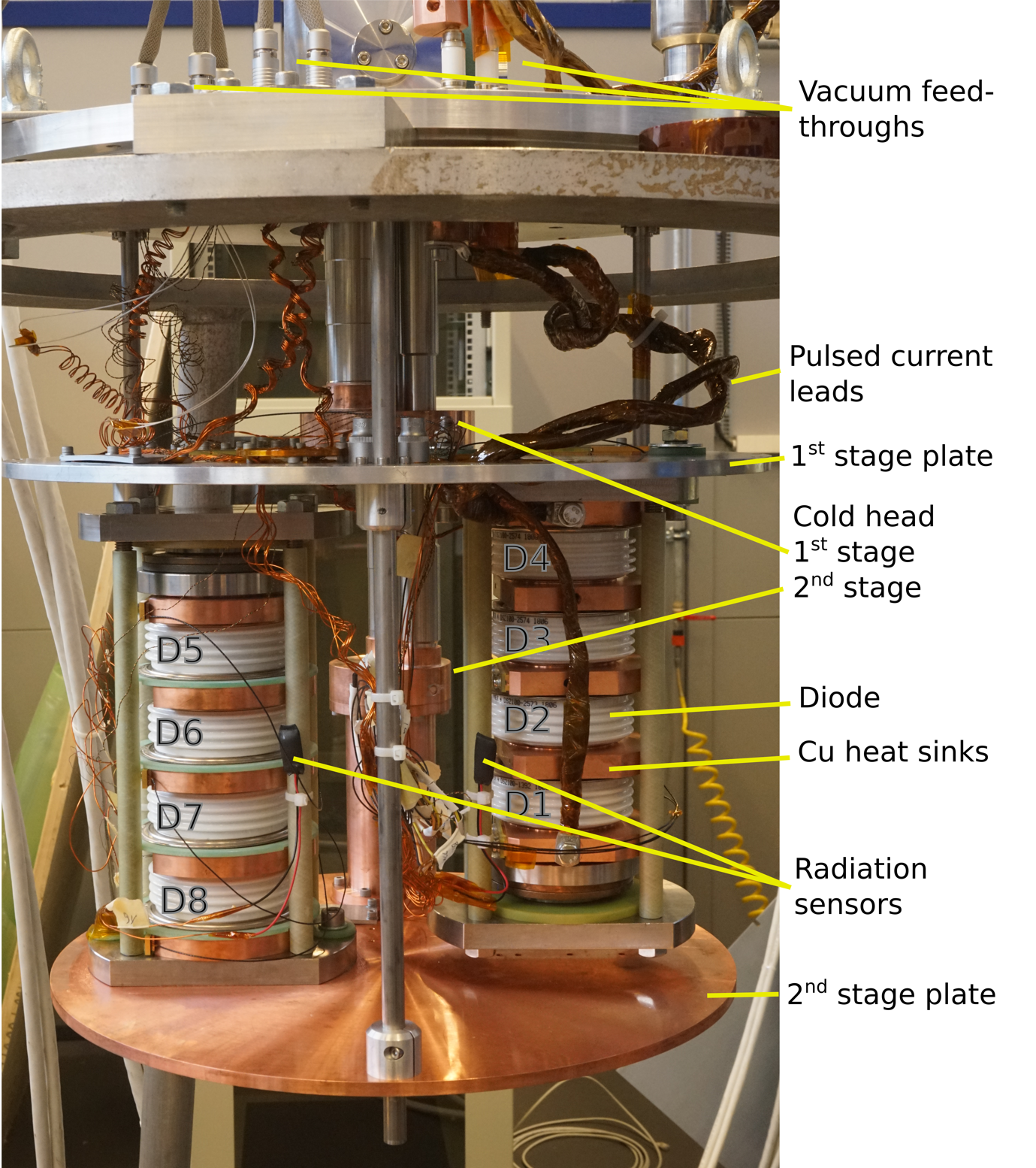As part of the High Luminosity LHC project, the final focus quadrupoles around IP1 and 5, also called triplets, will be replaced with new, high field, large aperture Nb3Sn magnets. These new magnets will be connected in series forming a triplet circuit. The new triplet circuits will be the most complex circuits in the LHC, with six magnets connected in series and being powered by four different power converters in a nested configuration.
The power converters and other active circuit elements will be placed in the new, radiation-free HL-LHC galleries (URs), whereas the magnets will be placed in the LHC tunnel. The current will be transported between these two locations via a novel superconducting link (see HL-LHC TDR V1 chapter 6).
The circuit also contains cold diodes across the triplet quadrupole magnets. The cold diodes have the important role, to decouple the circuit parts placed in the LHC tunnel from the parts in the new galleries and to limit over-currents in the superconducting busbars and link conductors. These over-currents can appear, when the circuit has to be discharged quickly following a quench, i.e. the loss of superconductivity, in one of the superconducting elements. Without cold diodes the over-currents could reach critical levels in case one of the protection devices is not functioning as expected.
The cold diodes of the new triplet circuits will be installed in a dedicated cryostat in the LHC tunnel downstream of the triplet magnets (between D1 and the DFX) and close to the LHC beam pipe. Due to their fairly small distance from the interaction point, the diodes will be exposed to radiation induced by the collision debris from the IP. Current estimates expect a radiation dose of up to 12 kGy and a 1 MeV equivalent neutron fluence of 5 x 1013 cm-2.
The central component of these diodes is a dopped silicon wafer. Charged particles and fast neutrons impacting on the wafer will cause displacement damage, which will have an impact on the properties of the diode, mainly its resistivity and turn on voltage.
Cold diodes are currently installed in the main dipole and quadrupole circuits of the LHC but experience only a fraction of the radiation levels expected in the new triplet circuits. Therefore, two new types of cold power diodes, so called ‘thin’ and ‘very-thin’ base width diodes, have been developed together with an industry partner. These diodes have a significantly thinner base width than the standard LHC diodes. This makes them more radiation tolerant, but at the same time reducing their capability to tolerate reverse voltages. The latter can be accepted as no large reverse voltages are expected in the new triplet circuit.
To ensure that the diodes would be able to withstand the expected radiation levels in the new triplets and still fulfill their purpose for circuit protection, several samples of each type (including the ones from LHC as reference) have been irradiated in the CHARM (CERN High energy AcceleRator Mixed field) facility over a period of more than 6 months.
A total dose of about 12 kGy and an integrate fluence of 1MeV neutron fluence of 2 x 1014 cm-2 was accumulated in the diodes. These are similar dose levels as expected for the diodes in HL-LHC and a factor four higher neutron fluence. During the irradiation in CHARM the diodes were kept continuously cold and their properties were measured weekly as a function of integrated fluence. Afterwards they experienced a heat cycle to study the effect of annealing.

As expected, the new diode types showed a higher radiation tolerance than the LHC reference diode. Although all three tested diode types would be suited for the use in the new HL-LHC triplet circuits, the most radiation tolerant (‘very-thin’ base width) diodes were chosen for the use in HL-LHC. Currently the design of the diode stacks and their integration in the special cryostat is ongoing. The new triplet circuit with all its elements will be put in nominal operating conditions at the String Test Facility in 2023 before their installation in the LHC tunnel and underground areas during LS3.

